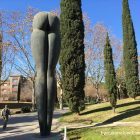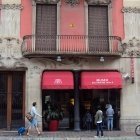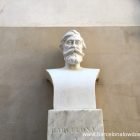Monument to the Catalan volunteers (Monument als Voluntaris Catalans) is a bronze statue by Catalan artist Josep Clarà located near the boating lake in the Parc de la Ciutadella.
The statue is a memorial to the approximately 900 Catalans who fought with the allied forces during World War One, many of whom had enlisted as volunteers in the French Foreign Legion.
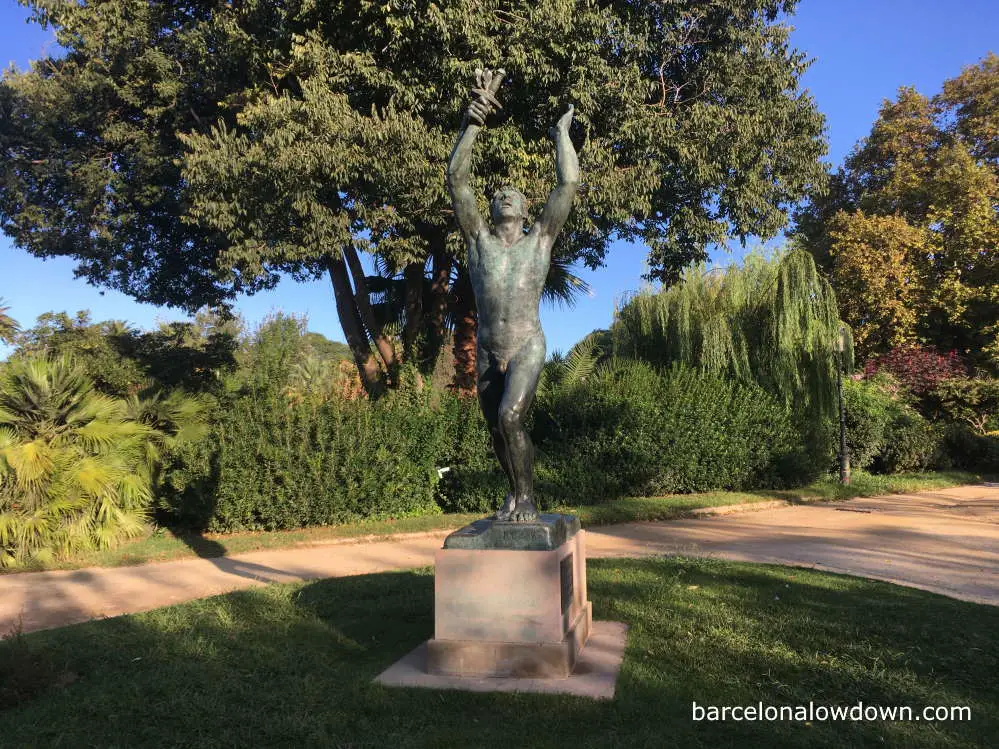
The 4m bronze sculpture depicts a naked young man looking upwards, his arms raised, holding a bayonet and olive branch in his right hand.
Clarà completed the monument in 1923, but its inauguration was delayed by the military coup and dictatorship led by Primo de Rivera, which lasted until 1930. During this period, all public displays of Catalan nationalism were prohibited.
The monument was finally inaugurated on the 14th of July 1936, coinciding with Bastille Day, just days before the start of the Spanish Civil War.
After the Spanish Civil War, the original plaque on the base of the statue, which bore the inscription “To the Catalan volunteers who died during the Great War-1918”, was removed.
In 1952, to prevent it from offending the bishops and other clerics who attended the Eucharistic Congress of Barcelona, a large wooden crate covered the monument. Later the same year, after the box was removed, the statue’s arms were cut off by vandals.
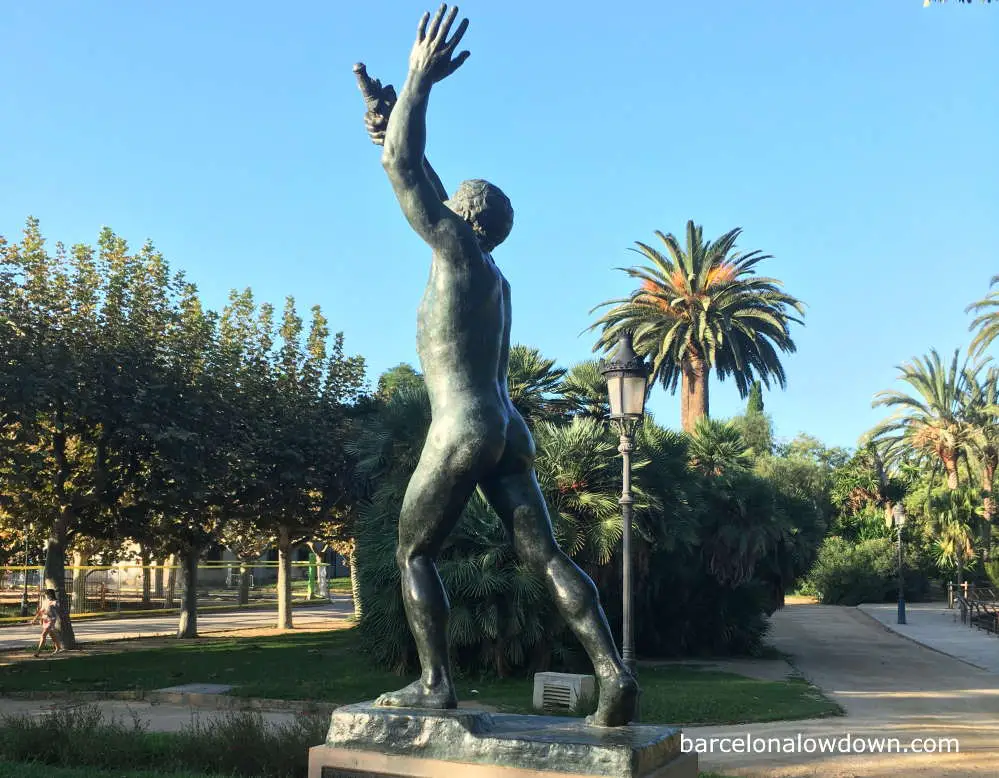
Two years later, at the insistence of the monument’s creator, the memorial was restored, and the arms were replaced. However, it seems that the city’s Falangist mayor disapproved of the statue’s nudity, and during the restoration, the nude’s genitals were discreetly covered by a vine leaf.
A bronze plaque was added to the base in 1988, dedicating the monument to the Catalan volunteers who died defending liberty in France and worldwide in both World Wars.
In 2011, on the 75th anniversary of the monument, the vine leaf was removed, returning the statue to its original form.
About the artist
Born in Olot, approximately 100 km from Barcelona, in 1878. Josep Clarà studied art in the Toulouse School of Fine Arts (École des Beaux-Arts) before moving to Paris in 1900, where he met his contemporaries Auguste Rodin and Aristides Maillol. In the years which followed, Clarà became one of the best known and most prolific artists of the Noucentista movement and returned to Barcelona where he lived until his death in 1958.
Clarà’s best-known works include La Diosa (The Goddess), which he created in 1928, Serenitat (1916) and Pujanza (1936). A marble replica of The Goddess can be seen in a small pool in Plaça de Catalunya; the original is currently in storage in the MNAC (Catalan National Art Museum). Serenitat is located in the Los Jardines de Miramar on Montjuïc hill and Pujanza is on display in Barcelona Town Hall.
After his death, Clarà left his home, his workshop and most of his collection to Barcelona city council. The building has since been torn down and replaced by a public library, and most of the artist’s work is now housed in the MNAC museum (Barcelona) and El Museu de la Garrotxa in Olot.
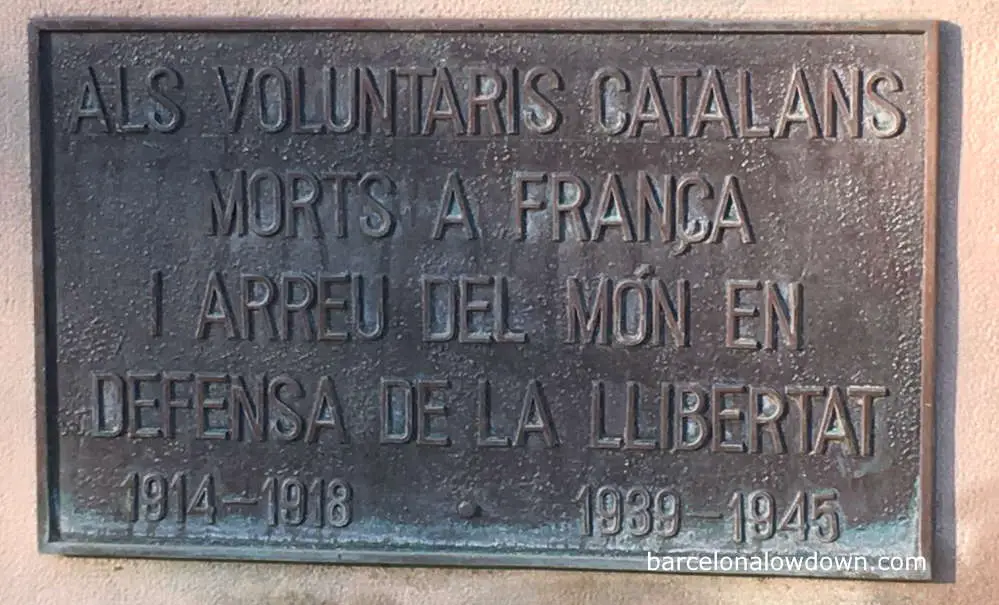
Location
The Monument to the Catalan volunteers is located near the boating lake in the Parc de la Ciutadella (Citadel Park).
How to get there
The nearest metro stations are Arc de Triomf on the red line (L1) and Jaume I and Ciutadella – Via Olímpica on the yellow line (L4). Tram T4 also stops nearby.
Other attractions nearby
Parc de la Ciutadella Fountain
Homage to Picasso
Barcelona Zoo
Arc de Triomf
The Born Cultural and Memorial Centre
Map
Parc de la Ciutadella, Passeig de Picasso, 21, Barcelona

